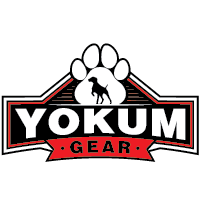Recall training is a fundamental aspect of behavioral training for dogs, ensuring they return to their handler when called. Effective recall not only enhances a dog's safety but also strengthens the bond between the dog and its owner. While teaching recall can be challenging, employing the right techniques consistently can yield successful outcomes. Below are some effective techniques for recall training that can help achieve reliable results.
Start Indoors
Before attempting recall training in an outdoor environment with numerous distractions, it's wise to start indoors. Begin in a controlled space such as your living room or a quiet hallway. This way, the dog can focus more easily on learning the skill without external stimuli leading to distractions.
Use a Command Word
Choose a command word that will be used consistently for recall, such as come, here, or return. Make sure all family members use the same command to avoid confusion. Consistency is key in helping the dog understand what is expected.
Positive Reinforcement
Reward your dog with high-value treats, praise, or playtime when they successfully return to you. Positive reinforcement reinforces the behavior, making it more likely that the dog will respond positively to the recall command in the future. The reward should be immediate to create a clear association between returning and the positive outcome.
Practice Makes Perfect
Recall should be practiced regularly in various settings to help your dog generalize the behavior. Start with low-distraction environments and gradually move to more challenging locations such as parks or other public spaces. Short, frequent practice sessions are more effective than long, occasional ones.
Gradual Distance Increase
Begin by calling your dog from a short distance, gradually increasing the distance as their recall improves. This approach helps build the dog’s confidence and ensures they can respond correctly even when further away. Always ensure that the distance increase is gradual to set the dog up for success.
Use a Long Line
A long line leash can be a useful tool for recall training, particularly in open, outdoor spaces. This allows the dog some freedom to move while still giving you control to guide them back if necessary. The long line can be gradually phased out as the dog becomes more reliable with their recall.
Minimize Distractions
Minimize distractions initially and only slowly introduce them as your dog improves. Dogs have a natural curiosity, and the desire to explore can overpower their urge to return. Gradually increasing the level of distraction helps ensure that the dog can stay focused on the recall command.
Recall as a Game
Turn recall into a game to make it fun and engaging for your dog. Play hide-and-seek or use a partner to call the dog back and forth. This not only makes training enjoyable but also helps the dog associate the recall command with positive and exciting experiences.
Keep Commands Clear and Consistent
Always use the same recall word and never use the recall command to call the dog for something they find unpleasant, such as bathtime or punishment. This ensures that the dog maintains a positive association with the recall command.
End on a Positive Note
End each training session on a high note with a successful recall response, and always reward your dog generously at the end. This leaves a positive impression and motivates the dog to perform well in subsequent sessions.
Conclusion
Effective recall training requires patience, consistency, and positive reinforcement. By starting in a low-distraction environment and gradually increasing the complexity, you can teach your dog to respond reliably to the recall command. Remember, recall is not just a “one-time” training session but a continued practice to maintain reliability. Incorporate these techniques into your training regimen to build a strong recall response and ensure your dog’s safety and well-being.

